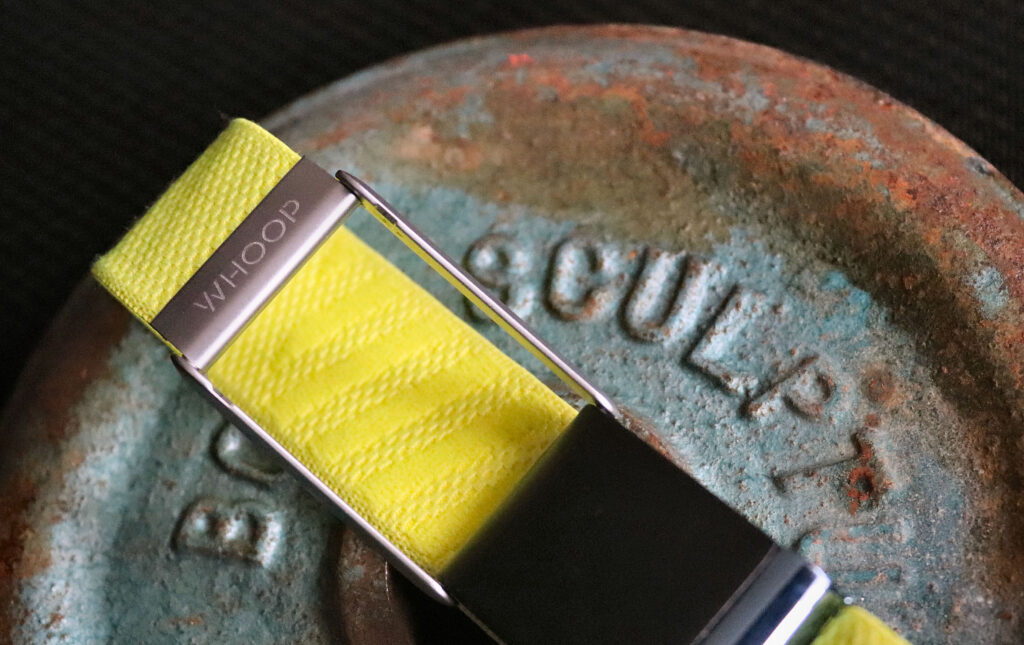 How Whoop Shapes Its Brand Identity
How Whoop Shapes Its Brand Identity
More: the most detailed Whoop Review
At the Connected: Health & Fitness Summit 2025 in Los Angeles, Whoop’s representatives affirmed its position as the wearable of choice for large cohorts of dedicated fitness enthusiasts. While the Boston-based brand is best known for tracking a vast array of health metrics—from sleep patterns to workout strain—it strives to go beyond that to create a more personal and engaging customer experience.
“We collect a bazillion data points; that can be a really cold experience for users,” said Tatiana Kuzmowycz, Whoop’s vice president of brand and formerly global creative director of ClassPass, during the summit. “We can market to you, we can show you the data—everybody can do that. How do we then take that to a level that creates affinity for the brand and a uniqueness to it?”
More Than a Fitness Tracker
Whoop’s branding strategy extends beyond simply being a high-performance wearable. Instead, the company positions itself as a lifestyle brand, fostering a deeper connection with health-conscious consumers. The ubiquitous marketing goal is to cultivate long-term brand loyalty, ensuring that Whoop is seen as an indispensable part of a user’s fitness journey rather than just another piece of technology.
“Nobody wants to be a product or tool,” Kuzmowycz explained. “Those are instantly replaceable. The next thing is going to come out, and someone’s going to beat you on price. You actually have to be building something that is considerably more compelling.”


Authenticity Through Partnerships
A key pillar of Whoop’s branding is its carefully curated partnerships with elite athletes, ensuring these collaborations go beyond mere endorsements – you will frequently see these athletes wearing Whoop on television. Whoop prioritizes authenticity and transparency, requiring athletes to share their data in partnership agreements.
“When we bring up partners, we ask for authenticity and intimacy, meaning they have to share their data with us,” Kuzmowycz said.
This approach was exemplified in Whoop’s collaboration with Cristiano Ronaldo. Whoop opted for a more personal and immersive approach, unlike conventional sponsorship deals.
“When we worked with Ronaldo, we literally shot at his house; he was in a bathtub in his house. It was one of the most chaotic moments in my career. But we have to be able actually to bring our partners to life,” Kuzmowycz recounted.
Beyond Ronaldo, Whoop has built a formidable roster of brand ambassadors across various sports. Notable names include Patrick Mahomes, Michael Phelps, Eli Manning, Rory McIlroy, LeBron James, Nelly Korda, Tiger Woods, Justin Thomas, Wade Miley, Brandon Woodruff, Virgil Van Dijk, Trent Alexander-Arnold, and Cody Gakpo. These athletes are claimed to embody Whoop’s core values of performance, dedication, and health optimization, reinforcing its positioning as a premium wearable for elite competitors and serious fitness enthusiasts.
By emphasizing personal storytelling, intimate marketing, and deep consumer engagement, Whoop endeavours to differentiate itself in the highly competitive wearables market. It’s more than the metrics—it’s about fostering a connection that makes customers feel invested in the brand and their fitness journey.
Do you Agree
Whoop’s pro-ambassadors stand out because they genuinely use the product. That’s not always the case with other endurance brands, where some elite athlete-investors appear only to use the gear they endorse very selectively.
